#preventdiabetes
Text
#Type2Diabetes
Learn the early warning signs of Type 2 diabetes and how to spot them early. Discover key symptoms to protect your health and seek timely treatment.
#health center#mckinney texas#diabetes management#diabetes care#Type2Diabetes#DiabetesAwareness#HealthInTexas#TexasHealthTips#PreventDiabetes
0 notes
Text
Spot the Signs, Take Control! 🩸👀

Do you know the subtle signs of diabetes? 🤔 Some symptoms are so mild that they can go unnoticed. Stay informed and take control of your health by recognizing these early warning signs. Knowledge is the first step to prevention! 🌟💪
Call us : 0181-5017777, 8145181451
🌐 Visit us: www.shrimannhospitals.com
#DiabetesAwareness#HealthTips#KnowTheSigns#PreventDiabetes#EarlyDetection#HealthyLiving#StayInformed#WellnessJourney#DiabetesPrevention#TakeControl
0 notes
Text
🚨 Prevent Diabetes: Essential Tips for a Healthier You! 🚨

🚨 Prevent Diabetes: Essential Tips for a Healthier You! 🚨
Diabetes affects millions worldwide, but you can take control and reduce your risk with these simple, proactive steps. Check out our comprehensive guide to diabetes prevention!
🏋️♂️ Maintain a Healthy Weight
🔹 Eat Balanced: Load up on fruits, veggies, whole grains, and lean proteins. 🔹 Portion Control: Keep those serving sizes in check to avoid overeating. 🔹 Exercise Regularly: Aim for 150 minutes of moderate activity or 75 minutes of vigorous activity weekly, plus muscle-strengthening exercises twice a week.
🚴♀️ Stay Active
🔹 Find Fun Activities: Walk, cycle, swim, or dance—choose what you love! 🔹 Set Goals: Start small and gradually increase your activity levels. 🔹 Be Consistent: Make physical activity a daily habit. 30 minutes most days is key!
🥗 Eat Nutritious
🔹 Fiber-Rich Foods: Think fruits, veggies, beans, whole grains, and nuts. 🔹 Healthy Fats: Opt for olive oil, nuts, and avocados. Limit red meat and dairy. 🔹 Low Glycemic Index Foods: Choose whole grains, legumes, non-starchy veggies, and most fruits.
🍬 Cut Down on Sugar
🔹 Avoid Sugary Drinks: Swap soda and juice for water or unsweetened tea. 🔹 Check Labels: Watch out for hidden sugars in processed foods. 🔹 Healthy Snacks: Choose fresh fruit, nuts, or yogurt over cookies and candy.
🚭 Quit Smoking
Smoking increases diabetes risk and its complications. Seek support to quit through counseling, medications, or support groups.
🍻 Limit Alcohol
Too much alcohol can lead to weight gain and diabetes. If you drink, do so in moderation—up to one drink per day for women and two for men.
🩺 Regular Health Check-Ups
🔹 Get Blood Tests: Regularly check blood sugar, cholesterol, and blood pressure. 🔹 Discuss Risks: Talk to your doctor about family history and other risk factors.
Preventing diabetes is about making healthier lifestyle choices. Start today and enjoy a healthier, happier future! 🌟💪
It's never too late to make positive changes. Share this post to help spread awareness and keep your loved ones healthy! 💚
0 notes
Text
Understanding the Differences Between Type 1 and Type 2 Diabetes

Diabetes is a chronic condition that affects how your body processes blood sugar (glucose). Understanding the differences between Type 1 and Type 2 diabetes is crucial for effective management and treatment.
What is Type 1 Diabetes?
Type 1 diabetes, also known as juvenile diabetes or insulin-dependent diabetes, is an autoimmune condition. This means that the body's immune system attacks and destroys the insulin-producing beta cells in the pancreas. As a result, the body cannot produce insulin, a hormone essential for allowing glucose to enter cells and produce energy.
People with Type 1 diabetes require lifelong insulin therapy to manage their blood sugar levels. This type of diabetes typically develops in children, teenagers, and young adults, although it can occur at any age.
Key Characteristics of Type 1 Diabetes:
Autoimmune condition
No insulin production
Requires insulin therapy
Usually diagnosed in younger individuals
What is Type 2 Diabetes?
Type 2 diabetes is the most common form of diabetes and is often associated with lifestyle factors such as obesity and physical inactivity. In this condition, the body becomes resistant to insulin, or the pancreas does not produce enough insulin. As a result, glucose accumulates in the bloodstream instead of being used for energy.
Type 2 diabetes can often be managed with lifestyle changes, oral medications, and sometimes insulin therapy. It is typically diagnosed in adults, but increasing numbers of children and teenagers are being diagnosed due to rising obesity rates.
Key Characteristics of Type 2 Diabetes:
Insulin resistance or insufficient insulin production
Often associated with obesity and lifestyle factors
Can be managed with lifestyle changes and medications
Usually diagnosed in adults, but increasingly seen in younger individuals
Common Symptoms of Diabetes
Both types of diabetes share some common symptoms, including:
Increased thirst and hunger
Frequent urination
Unexplained weight loss
Fatigue
Blurred vision
Slow-healing sores
Diagnosing Diabetes
Early diagnosis is crucial for managing diabetes effectively and preventing complications. Various tests can help diagnose diabetes, including:
1. Fasting Blood Sugar (FBS): Measures blood sugar after an overnight fast.
2. Postprandial Blood Sugar (PPBS): Measures blood sugar two hours after a meal.
3. HbA1c Test: Provides an average blood sugar level over the past two to three months.
4. Oral Glucose Tolerance Test (OGTT): Measures the body's response to glucose over a few hours.
5. Random Blood Sugar (RBS): Measures blood sugar at any time of the day.
Diabetes Testing at RML Pathology
RML Pathology offers comprehensive diabetes testing services to help you manage and monitor your condition effectively. Our services include:
Fasting Blood Sugar (FBS)
Postprandial Blood Sugar (PPBS)
HbA1c Test
Oral Glucose Tolerance Test (OGTT)
Random Blood Sugar (RBS)
We provide accurate results and personalized care to ensure you receive the best possible treatment. Additionally, our convenient home sample collection service makes it easy to get tested without leaving your home.
Book your diabetes test with RML Pathology today and take the first step towards better health management.
About RML Pathology
RML Pathology is a trusted diagnostic laboratory offering a wide range of medical tests and services. Our commitment to accuracy, reliability, and patient care makes us a leading choice for healthcare services in India.
For more information or to book a test, visit our website or contact us today.
#DiabetesAwareness#Type1Diabetes#Type2Diabetes#HealthCheckup#BloodSugarTest#DiabetesManagement#RMLPathology#HomeSampleCollection#StayHealthy#PreventDiabetes#KnowYourNumbers#HealthyLiving#MedicalDiagnostics
1 note
·
View note
Text
The Role of Diet and Lifestyle in the Prevention of Type 2 Diabetes
Type 2 diabetes, a chronic condition characterized by high blood sugar (glucose) levels, has become a global health concern. According to the World Health Organization (WHO), in 2019, an estimated 422 million people worldwide had diabetes, with type 2 diabetes accounting for around 90% of cases. Read more: https://bit.ly/3XwLDYA

#type2diabetes#diabetesprevention#healthylifestyle#bloodsugarcontrol#dietandnutrition#physicalactivity#insulinresistance#healthyeating#exercise#PreventDiabetes#wellness#chronicdisease#healthyliving#diabetesawareness#HealthyHabits#StressManagement#balanceddiet#sleephealth#wholefoods#fitness
0 notes
Text
Diet and Nutrition: Exploring the Impact of Balanced Diets, Low Glycemic Index Foods, and Specific Nutrients on Preventing Diabetes
Diabetes is a chronic condition that affects millions of people worldwide, leading to serious health complications if not managed effectively. Prevention of diabetes, particularly Type 2 diabetes, is a growing area of focus in public health. Diet and nutrition play crucial roles in this preventive strategy. Understanding the impact of balanced diets, low glycemic index (GI) foods, and specific nutrients can help individuals make informed choices to reduce their risk of developing diabetes.

The Importance of a Balanced Diet
A balanced diet is foundational in maintaining overall health and preventing diseases, including diabetes. This diet typically includes a variety of foods from all food groups: fruits, vegetables, whole grains, proteins, and dairy. Each group provides essential nutrients that support bodily functions and maintain metabolic health.
Fruits and vegetables are rich in vitamins, minerals, and fiber. Fiber, in particular, is crucial for diabetes prevention as it helps regulate blood sugar levels. Whole grains, such as brown rice, quinoa, and oats, are also excellent sources of fiber and have been shown to reduce the risk of developing Type 2 diabetes. Protein sources like lean meats, fish, legumes, and nuts provide necessary amino acids without adding excessive saturated fats, which are detrimental to heart health and diabetes risk.
Incorporating healthy fats from sources such as avocados, nuts, and olive oil, rather than trans fats and saturated fats, can also help in preventing diabetes. Healthy fats improve insulin sensitivity and reduce inflammation, both of which are important in managing blood sugar levels.

Low Glycemic Index Foods
The glycemic index (GI) measures how quickly a food raises blood sugar levels after consumption. Foods with a low GI are digested and absorbed more slowly, leading to a gradual rise in blood sugar and insulin levels. This slow release is beneficial for preventing diabetes as it helps maintain stable blood sugar levels and reduces insulin resistance.
Low GI foods include most fruits, vegetables, whole grains, legumes, and dairy products. For instance, apples, lentils, and yogurt have low GI values and are excellent choices for a diabetes-preventive diet. These foods not only help in managing blood sugar levels but also promote satiety, reducing the likelihood of overeating and weight gain, both of which are risk factors for diabetes.

Specific Nutrients in Diabetes Prevention
Certain nutrients have been identified as particularly beneficial in preventing diabetes. Among these, fiber stands out due to its ability to slow glucose absorption and improve insulin sensitivity. Foods high in fiber include fruits, vegetables, whole grains, and legumes.
Magnesium is another critical nutrient for diabetes prevention. It plays a role in carbohydrate metabolism and insulin function. Studies have shown that higher magnesium intake is associated with a lower risk of diabetes. Foods rich in magnesium include leafy green vegetables, nuts, seeds, and whole grains.
Omega-3 fatty acids, found in fatty fish like salmon, walnuts, and flaxseeds, have anti-inflammatory properties and improve insulin sensitivity. Including these in the diet can help reduce the risk of diabetes and improve heart health, which is often compromised in individuals with diabetes.
Polyphenols, antioxidants found in foods like berries, tea, and dark chocolate, also contribute to diabetes prevention. They help in reducing oxidative stress and inflammation, improving insulin sensitivity, and protecting against the development of diabetes.
Conclusion
Preventing diabetes through diet and nutrition is a multifaceted approach that involves adopting a balanced diet, incorporating low GI foods, and ensuring adequate intake of specific nutrients. By making these dietary adjustments, individuals can significantly reduce their risk of developing diabetes and improve their overall health. Public health initiatives and education programs should continue to emphasize the importance of diet and nutrition in diabetes prevention, empowering people to make healthier food choices and lead healthier lives.
WE SUGGEST YOU TO BEST SOLUTION FOR BLOOD SUGAR.CLICK TO KNOW MORE HERE
#type 2 diabetes#diabetes#blood sugar treatment#diabetes treatment#preventdiabetes#type 1 diabetes#type 1 problems#type 1 diabetic
0 notes
Text
Unlocking the Secrets of HbA1c: Understanding the Key to Diabetes Management
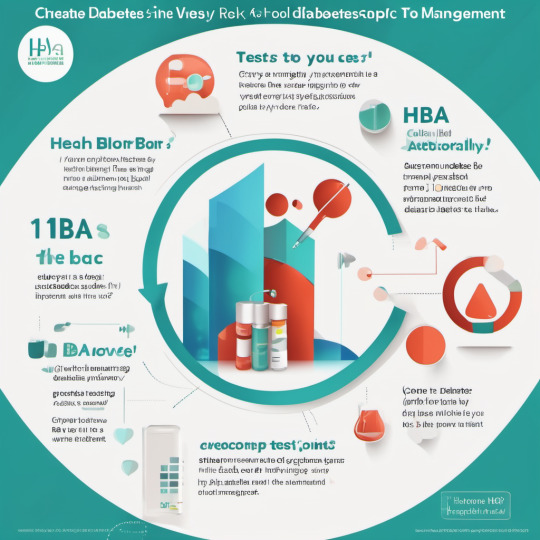
Are you curious about the mysterious HbA1c test? Do you want to understand how it relates to diabetes and your overall health? Look no further! In this comprehensive guide, we'll delve into the world of HbA1c, exploring what it is, how it's measured, and what the results mean for you.
What is HbA1c?
HbA1c, or Hemoglobin A1c, is a vital marker for diabetes management. It's a test that measures the average amount of glucose attached to your red blood cells over the past 2-3 months. This attachment is called glycation, and it's a natural process that occurs when glucose enters your bloodstream.
How is HbA1c measured?
The HbA1c test is a simple blood test that can be done at your healthcare provider's office or at a lab. It's usually done when you're fasting, and it doesn't require any special preparation. The test measures the percentage of hemoglobin A1c in your blood, which indicates your average glucose levels over the past few months.
What do the results mean?
Your HbA1c results can fall into one of three categories:

Normal: Below 5.7%
Prediabetes: 5.7% to 6.4%
Diabetes: 6.5% and above
Let's break down what each category means:
Normal: If your HbA1c is below 5.7%, it means your glucose levels are within a healthy range. Keep up the good work!
Prediabetes: If your HbA1c falls between 5.7% and 6.4%, it means you're at risk of developing diabetes. Don't worry; this is a great opportunity to make lifestyle changes and prevent diabetes from developing!
Diabetes: If your HbA1c is 6.5% or higher, it means you have diabetes. Don't panic! With the right treatment and lifestyle changes, you can manage your diabetes and live a healthy life.
Why is HbA1c important?
HbA1c is a vital tool for diabetes management because it:
Provides a long-term picture of your glucose levels
Helps diagnose and monitor diabetes
Assists in adjusting treatment plans
Encourages healthy lifestyle choices
Conclusion:
HbA1c is a powerful indicator of your glucose levels and overall health. By understanding what HbA1c is, how it's measured, and what the results mean, you'll be better equipped to manage your diabetes and take control of your health. Remember, knowledge is power!
Optimized keywords: HbA1c, Hemoglobin A1c, diabetes management, glucose levels, prediabetes, diabetes diagnosis, healthy lifestyle choices.
Note: This blog post is for informational purposes most effective and need to no longer be considered scientific advice. Consult your healthcare company for customized guidance on diabetes management and HbA1c testing.
#HbA1c#DiabetesManagement#GlucoseLevels#HemoglobinA1c#Prediabetes#DiabetesDiagnosis#HealthyLifestyle#DiabetesAwareness#BloodSugarControl#HealthMonitoring#DiabetesPrevention#HealthTips#WellnessJourney#MedicalTesting#ChronicIllness#Healthcare#PatientEducation#DiabetesCare#PreventDiabetes#HealthyLiving#KnowYourNumbers#LongTermHealth
0 notes
Text
Insulin Resistance: A Comprehensive Guide for Patients and Clients
Insulin resistance is an illness that impacts millions of people worldwide. It is closely linked to other conditions such as non-alcoholic fatty liver syndrome, obesity, adipokines, inflammation, hypertension, hyperinsulinemia, and lipid metabolism. Understanding the complexities of insulin resistance is crucial for anyone hoping to maintain their health and wellbeing, in an efficient manner. This comprehensive book will provide enlightening information on insulin resistance, including definitions, risk factors, and therapy and prevention strategies.
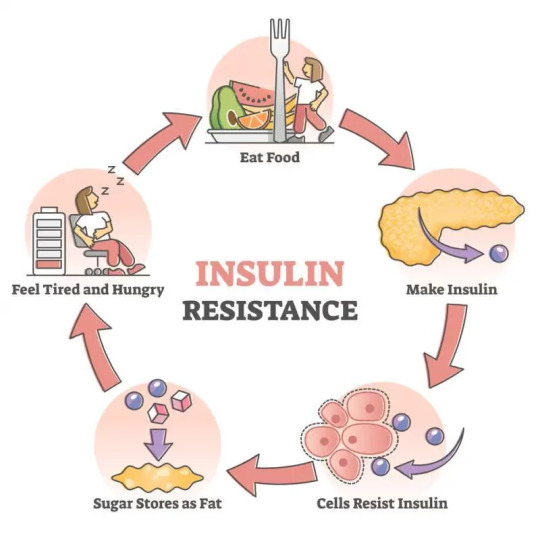
Cells in the body become less sensitive to the hormone insulin when they become insulin resistant, a complex metabolic disorder. The job of insulin is to facilitate the uptake of circulatory glucose into cells for use as an energy source. A condition known as hyperglycemia is brought on by a rise in blood glucose levels brought on by insulin-resistant cells. People who have these genetic risk factors need to take proactive measures to control their insulin sensitivity.
#InsulinResistance#HealthGuide#PatientEducation#DiabetesPrevention#MetabolicHealth#BloodSugarControl#HealthyLiving#ChronicIllness#EndocrineHealth#NutritionEducation#PreventDiabetes#HealthAwareness#WellnessJourney#HealthyHabits#MedicalGuide#HealthTips#DiabetesManagement#HolisticHealth#LifestyleChanges
0 notes
Text

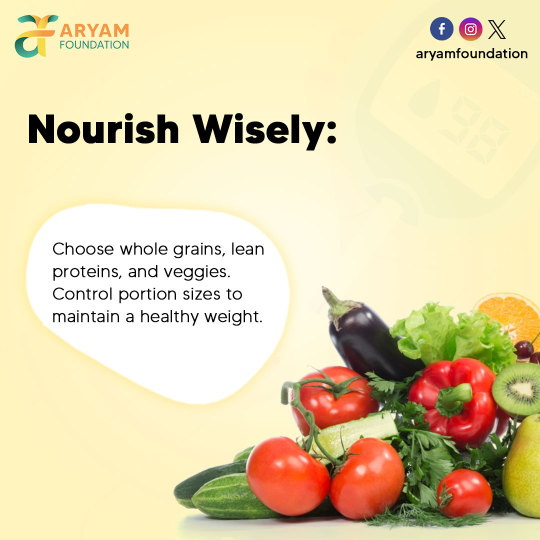



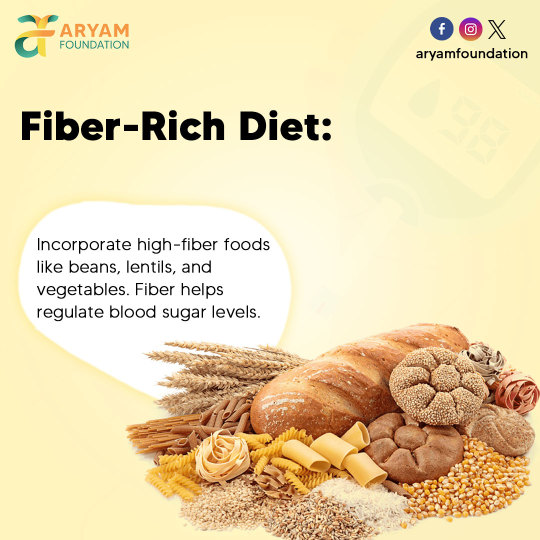
Essential Tips for Diabetes Prevention
🌼 Empower yourself against diabetes with these vital tips! 🌼 Prioritize your health by making mindful food choices, staying active, ensuring quality sleep, managing stress, and incorporating fiber-rich foods into your diet. Small changes, big impact! 🌟
#DiabetesPrevention#HealthyLivingGoals#HealthyHabits#DiabetesAwareness#LifestyleGoals#StayActive#HealthyChoices#MindfulEating#SelfCare#SugarFreeLife#FitnessMotivation#WellnessJourney#HealthyLifestyle#WellnessTips#HealthIsWealth#NourishYourBody#PreventDiabetes#StressFreeLiving#StayFit#HealthyLiving#StayHealthy#FiberRichDiet#SleepWell#BeActive
0 notes
Text
10 Effective Strategies to Prevent Diabetes and Live a Healthy Life
Diabetes, a chronic condition affecting millions worldwide, is characterized by high blood sugar levels. It can lead to severe health complications if left unmanaged. However, by adopting a proactive approach and making healthy lifestyle choices, it is possible to prevent the onset of diabetes. In this article, we will explore ten effective strategies to help you prevent diabetes and lead a healthier life.
1 note
·
View note
Text
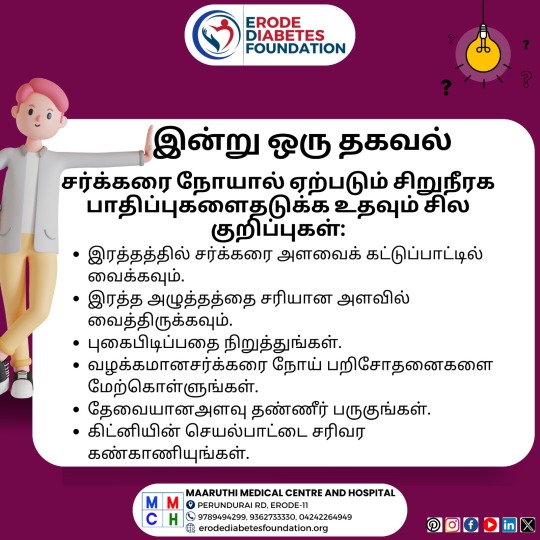
சரியான கவனிப்புடன் நமது உடலைப் பராமரித்தால் சர்க்கரை நோயால் ஏற்படும் சிறுநீரக நோயைத் தடுக்கலாம் அல்லது தாமதப்படுத்தலாம். சிறுநீரக நோயைத் தடுக்க உதவும் சில குறிப்புகளை இங்கே கொடுத்துள்ளோம்.
#DiabetesAwareness #KnowYourNumbers #DiabetesPrevention #HealthyLiving #Type2Diabetes #BloodSugarControl #DiabetesEducation #LifestyleChanges #DiabetesManagement #PreventDiabetes #erodediabetesfoundation #EDF #diabeteslife #diabetesawareness #diabetes #diabetescare #diabetestips #bloodsugardiet #DiabetesNutrition #DiabetesDiet
0 notes
Video
youtube
how to avoid type 2 diabetes in unitedstates_2 #Howtoavoidtype2 #diabete...
#simpletipstopreventdiabetespreventdiabetes#preventdiabetes#preventdiabetesnaturally#preventdiabetesfood#type2 diabetes#diabetesmellitus#diabetes
1 note
·
View note
Photo

Many conventional diabetes diets rely on meat or grains as the major calorie source. However, these strategies have serious drawbacks. High-nutrient, low glycemic load (GL) foods are the optimal foods for diabetics. And these foods also help to prevent diabetes in the first place. #FoodRevolution #greenvegetables #nonstarchyvegetables #beans #nuts #seeds #freshfruit #fruit #diabetes #type2diabetes #preventdiabetes #reversediabetes #health #healthyeating #healthyliving #FRN #FoodRevolutionNetwork (at United States of America) https://www.instagram.com/p/CWpg61vscFq/?utm_medium=tumblr
#foodrevolution#greenvegetables#nonstarchyvegetables#beans#nuts#seeds#freshfruit#fruit#diabetes#type2diabetes#preventdiabetes#reversediabetes#health#healthyeating#healthyliving#frn#foodrevolutionnetwork
1 note
·
View note
Link
#snacks for diabetes#gutcare clinics#preventdiabetes#healthylifestyle#health tips#health tips for diabetic patients#best hospital in bangalore
0 notes
Photo

Don't view this as what you don't get to do, learn what you do get to do and when! If you want to prevent diabetes, avoid the following on a regular basis. SUGAR, Starcy veggies, high glycemic foods, processed grains, bread, French fries flour tortillas, canned vegetables and soups, etc. These should be reserved for TREAT/CHEAT days, not EVERYDAY! 😁 I want you to KNOW better so you can DO Better! #coachmelonie #livinhealthee #livinhealtheecm #managesugar #managediabetes #preventdiabetes #preventdiabetestype2 #diabetesawareness #diabetes #diabetestype2 #diabetesrecipes #managebloodsugar https://www.instagram.com/p/CRmjvmYgDRL/?utm_medium=tumblr
#coachmelonie#livinhealthee#livinhealtheecm#managesugar#managediabetes#preventdiabetes#preventdiabetestype2#diabetesawareness#diabetes#diabetestype2#diabetesrecipes#managebloodsugar
0 notes
Text
Unlocking the Secrets of Postprandial Blood Sugar: A Comprehensive Guide

When it comes to managing blood sugar levels, understanding postprandial (after meal) blood sugar is crucial. This vital indicator reveals how well your body regulates blood sugar levels after consuming food, providing valuable insights into your overall health. In this article, we'll delve into the world of postprandial blood sugar, exploring its normal ranges, the implications of prediabetes and diabetes, and practical tips for maintaining healthy blood sugar levels.
Understanding Postprandial Blood Sugar
Postprandial blood sugar measures the amount of glucose in your blood two hours after eating a meal. This test is usually performed after a meal containing carbohydrates, as they cause a significant increase in blood sugar levels. The results provide a snapshot of your body's ability to regulate blood sugar levels after food consumption.
Normal Postprandial Blood Sugar Ranges
For a healthy individual, the normal postprandial blood sugar range is less than 140 mg/dL (7.8 mmol/L) two hours after eating. This indicates that your body is effectively regulating blood sugar levels, and you're at a low risk of developing diabetes.

Prediabetes: A Warning Sign
If your postprandial blood sugar level falls between 140-199 mg/dL (7.8-11.0 mmol/L) two hours after eating, you're considered to have prediabetes. This is a critical warning sign, as it indicates that your body is struggling to regulate blood sugar levels. Prediabetes is a precursor to diabetes, and it's essential to take proactive steps to prevent its progression.
Diabetes: A Serious Health Condition
If your postprandial blood sugar level is 200 mg/dL (11.1 mmol/L) and above two hours after eating, you're diagnosed with diabetes. This condition occurs when your body either can't produce enough insulin (type 1 diabetes) or becomes resistant to insulin (type 2 diabetes). Uncontrolled diabetes can lead to severe health complications, including heart disease, kidney damage, and blindness.
Causes and Risk Factors
The onset of diabetes is influenced by a combination of factors, including:
Genetics
Obesity
Physical inactivity
Age (45 and above)
Family history
Ethnicity (certain groups are more prone to diabetes)
Symptoms and Complications

Diabetes can manifest in various ways, including:
Increased thirst and urination
Fatigue
Blurred vision
Slow healing of cuts and wounds
Tingling or numbness in arms and feet
If left unmanaged, diabetes can result in severe complications, such as:
Heart disease and stroke
Kidney damage and failure
Nerve damage and pain
Eye damage and blindness
Foot damage and amputation
Practical Tips for Healthy Blood Sugar Management
Fortunately, there are many ways to regulate blood sugar levels and prevent the onset of diabetes:
Fuel your body with a varied diet emphasizing whole, unprocessed foods
Engage in regular physical activity (at least 150 minutes/week)
Maintain a healthy weight
Limit sugary drinks and refined carbohydrates
Get enough sleep (7-8 hours/night)
Manage stress levels through relaxation techniques (yoga, meditation, etc.)
Conclusion
Postprandial blood sugar is a vital indicator of our body's ability to regulate blood sugar levels after food consumption. By understanding the normal ranges, causes, and complications of diabetes, we can take proactive steps to maintain healthy blood sugar levels and prevent the onset of this serious health condition. Remember, knowledge is power, and by empowering ourselves with the right information, we can unlock a healthier, happier life.
Optimized keywords: Postprandial blood sugar, normal ranges, prediabetes, diabetes, blood sugar management, healthy lifestyle, whole foods, physical activity, stress management.
#PostprandialBloodSugar#BloodSugarManagement#HealthyLiving#DiabetesAwareness#Prediabetes#GlucoseLevels#HealthyLifestyle#WholeFoods#PhysicalActivity#StressManagement#DiabetesPrevention#BloodSugarControl#HealthTips#WellnessJourney#NutritionMatters#FitnessGoals#HealthEducation#InsulinResistance#DiabetesCare#PreventDiabetes#BloodSugarMonitoring
0 notes